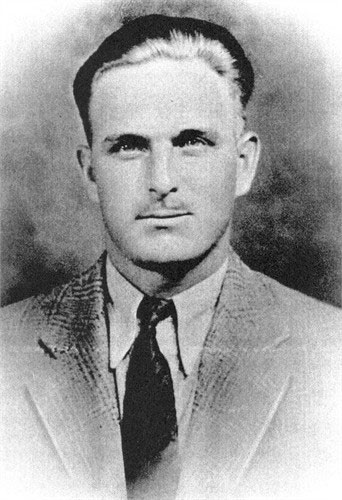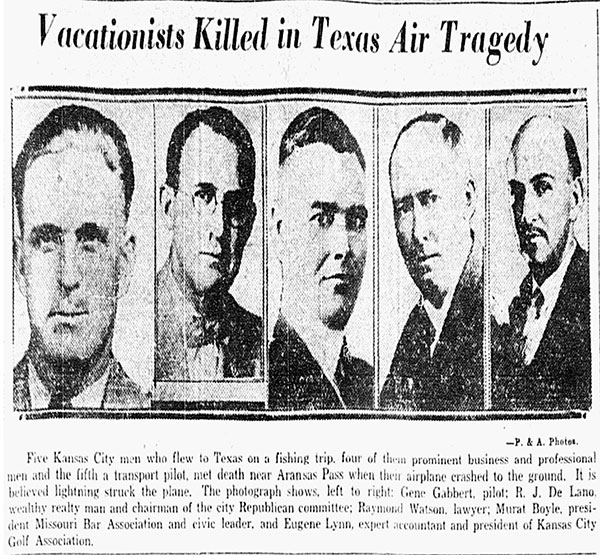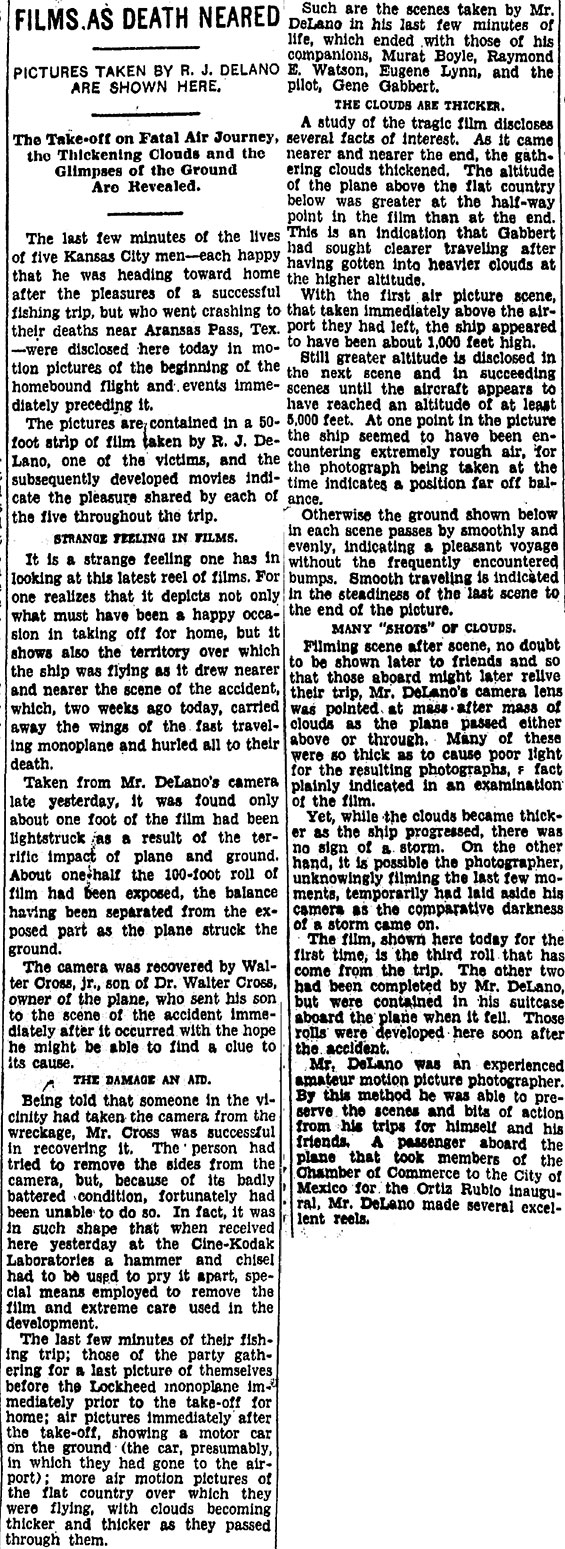THANK YOU!
YOUR PURCHASE OF THESE BOOKS SUPPORTS THE WEB SITES THAT BRING TO YOU THE HISTORY BEHIND OLD AIRFIELD REGISTERS
Your copy of the Davis-Monthan Airfield Register 1925-1936 with all the pilots' signatures and helpful cross-references to pilots and their aircraft is available at the link. 375 pages with black & white photographs and extensive tables
---o0o---
The Congress of Ghosts (available as eBook) is an anniversary celebration for 2010. It is an historical biography, that celebrates the 5th year online of www.dmairfield.org and the 10th year of effort on the project dedicated to analyze and exhibit the history embodied in the Register of the Davis-Monthan Airfield, Tucson, AZ. This book includes over thirty people, aircraft and events that swirled through Tucson between 1925 and 1936. It includes across 277 pages previously unpublished photographs and texts, and facsimiles of personal letters, diaries and military orders. Order your copy at the link.
---o0o---
Military Aircraft of the Davis Monthan Register 1925-1936 is available at the link. This book describes and illustrates with black & white photographs the majority of military aircraft that landed at the Davis-Monthan Airfield between 1925 and 1936. The book includes biographies of some of the pilots who flew the aircraft to Tucson as well as extensive listings of all the pilots and airplanes. Use this FORM to order a copy signed by the author, while supplies last.
---o0o---
Art Goebel's Own Story by Art Goebel (edited by G.W. Hyatt) is written in language that expands for us his life as a Golden Age aviation entrepreneur, who used his aviation exploits to build a business around his passion. Available as a free download at the link.
---o0o---
Winners' Viewpoints: The Great 1927 Trans-Pacific Dole Race (available as eBook) is available at the link. This book describes and illustrates with black & white photographs the majority of military aircraft that landed at the Davis-Monthan Airfield between 1925 and 1936. The book includes biographies of some of the pilots who flew the aircraft to Tucson as well as extensive listings of all the pilots and airplanes. Use this FORM to order a copy signed by the author, while supplies last.
---o0o---
Clover Field: The first Century of Aviation in the Golden State (available in paperback) With the 100th anniversary in 2017 of the use of Clover Field as a place to land aircraft in Santa Monica, this book celebrates that use by exploring some of the people and aircraft that made the airport great. 281 pages, black & white photographs.
---o0o---
YOU CAN HELP
I'm looking for information and photographs of this airplane to include on this page. If you have some you'd like to share, please click this FORM to contact me.
---o0o---
Thanks to Guest Editor Bob Woodling for researching, sourcing and writing most of this page.
---o0o---
SPONSORED LINKS
HELP KEEP THESE WEB SITES ONLINE
FOR YOUR CONVENIENCE
You may NOW donate via PAYPAL by clicking the "Donate" icon below and using your credit card. You may use your card or your PAYPAL account. You are not required to have a PAYPAL account to donate.
When your donation clears the PAYPAL system, a certified receipt from Delta Mike Airfield, Inc. will be emailed to you for your tax purposes.
---o0o---
KENNETH EUGENE GABBERT
 |
Gene Gabbert landed once at Peterson Field, on August 25, 1929, arriving from Kansas City, MO and piloting Lockheed Vega NC394H. He departed two days later for Seattle, WA. No reason was given for the flights.
The airplane was owned by Dr. Walter. M. Cross, a prominent and wealthy Kansas City chemist whose scientific achievements included the development of a widely-used process to create gasoline from crude oil. Dr. Cross purchased the Vega in June, 1929 (see Dr. Cross’s obituary, below, for additional information). Gabbert was Cross's personal pilot.
Kenneth Eugene Gabbert was born in Nemaha County, KS on August 11, 1896. After graduation from Wetmore High School he attended the University of Kansas for one year, and then taught for one year before joining an Idaho National Guard infantry regiment that was involved in guarding the Mexican border. He served in WWI in the Army Signal Corps and received the Croix de Guerre. It is unclear when and where he received his flight training. But we know from the Davis-Monthan Airfield Register that he landed there in 1928 in the Inland Sport prototype, NX7255.
Gabbert married Sarah Hazel Anthony on November 30, 1929 in Kansas City, MO. Dr. Cross loaned the airplane to Gene for the couple’s honeymoon flight to Dallas, TX.
Sadly, their marriage lasted less than one year because Gene was killed in the crash of Vega NC394H. In July, 1930 Dr. Cross loaned his airplane to five of his friends to fly to the Texas Gulf Coast to fish for tarpon. Gene Gabbert flew the men to Texas and returned to pick them up on July 10. The weather was stormy in the vicinity of Corpus Christi and ground observers saw the Vega enter a dark cloud shortly after taking off. The airplane emerged from the cloud, shed its right wing and crashed in a vertical dive. Their photos were published after the crash in the Dallas (TX) Morning News, July 13, 1930, below.
 |
Dr. Cross’s son visited the crash site and gave this account to the Kansas City Star newspaper:
"Preliminary investigation shows the right wing came off the plane as it leveled off from a vertical dive through a dark cloud." …. The wing broke in at least three places on the spars, but fittings were all good. Due to twisting, the wood covering of the wing all was split off. Covering of the left wing was split off. After the wing came off axial rotation apparently tore all aileron and tail surfaces off. There was no indication of fusing. [”Fusing" in this case meant thermal fusing of metal parts, which would occur if lightning struck the craft.] The Kansas City Star of July 11, 1930 went into greater detail with federal and local plans to examine the causes of the accident. The headline read "DEEP CRASH PROBE; U.S. Inspectors Here." There were no findings of a lightning strike.
Interestingly, one of the passengers, R.J. Delano, was an experienced amateur movie photographer and filmed the last several minutes of the flight from his seat in the Vega. His camera was recovered from the wreckage, the film developed, and used in the investigation. The film ends prior to the upset leading to the crash. Below, the Kansas City Star of July 24, 1930 reports on the film details.
 |
We do not know if the Commerce Department issued a probable cause for the accident, although Gabbert seems to have been publicly exonerated even though some critics stated that he should have avoided the clouds or at least delayed his departure until the weather improved.
Gene Gabbert was popular among family and friends. Evidence of this is found in his obituary, below, from The Havensville Review, Havensville, KS, July 17, 1930. Kenneth Eugene Gabbert is buried in Soldier, KS. He flew with Transport pilot certificate T1485.
Gene Gabbert Buried Monday The final rites for Kenneth Eugene Gabbert, wireless student and recognized expert of aviation were held at the home of his parents, Mr. and Mrs. A.F. Gabbert, southwest of Goff, on Monday afternoon at 2:00 o 'clock. Throughout, the services were of the simplicity and sincerity that would have best suited the wishes of this fine young man, who had dedicated his life to wireless and the making of flying practical and safe. Kenneth Eugene was the eldest son of Mr. and Mrs. A.F. Gabbert and was born on the home place where the final services were held, on August 11, 1896. Last November Gene was married to Miss Hazel Anthony a Kansas City girl, who is in the advertising department of the Kansas City Star. Their marriage was happy. The wife was enthusiastic about flying and proud of her aviator husband's success. She was a true mate and has endeared herself to the family and friends of her husband here. Death came last Thursday forenoon near Aransas Pass, Texas, when the plane, Gene was piloting with four Kansas City business men as passengers, crashed from a height of 10,000 feet, killing all on board. Just what caused the crash will be never known, but fellow pilots, friends and associates are sure that it was through no lack of care, judgment or courage on the part of Gene. At the final services at the Gabbert home Monday afternoon; Rev. Chas. A. Richard of Seneca gave an impressive oral tribute to life of Gene, who had crowded more of activity and service to his fellowmen in thirty-four years than most people do in three score and ten. There were easily a thousand neighbors and friends present at the service and burial. “Johnny” Buckles superintendent of the Soldier schools, and friend to the deceased, gave the musical prelude and furnished piano accompaniment for Mrs. Burr of Soldier, who sang “There is No Death,” “Roses of Picardy,” and “Perfect Day.” Minister pianist and soloist gave perfect rendition in the fitting and beautiful ceremony. Burial was in the Gabbert family lot in Soldier cemetery, beside the little brother, who died a number of years ago. The uniformed firing squad of the Irwin Kirkwood American Legion Post of Kansas City, Mo.; with their bugler and drummer, were present under the command of Frank B. Fisher, Jr. Gene was a member of the post. Eight veteran flyer friends of Kansas City were also present for the final ceremony of their comrade. Pallbearers were Harold, Ralph, Rolland and Francis Gabbert, Rav and Jack Riley, all first cousins of Gene. Services at the grave were beautiful and inspiring and a gratifying final chapter of tribute to a happy useful, successful man. A splendid day, a host of friends any many relatives grouped at the open grave in a panorama of nature at her best. The Lord's Prayer and twenty-third psalm by the minister, the snappy military honors by the firing squad, and “Taps” and resounding echo by the buglers were enhanced by the droning of three of the planes of flyer comrades overhead who dropped flowers to earth. A fitting, satisfying ceremony for the occasion. The floral display was most beautiful and elaborate. The entire front of the house was covered with floral pieces, behind the flag-draped casket, and the porch surrounded by floral tributes that came from far and near. Nearly one hundred different pieces had been sent by individuals and organizations. |
Sarah Hazel Anthony Gabbert remarried in 1935 and died in 2012 at age 105. Her information, with photographs, is at FindaGrave at the link. Curiously, FindaGrave includes neither mention nor information regarding her first husband, our pilot Gene Gabbert.
---o0o---
More information on the crash appeared in the Kansas City Star of July 10, 1930 (Gabbert's wife, who worked in the advertising department at the paper, must have found this copy difficult to read and absorb). Note mention of an eye witness seeing an explosion before the airplane crashed. Note also the tip for deflecting a bank robbery.
 |
Regarding Dr. Walter M. Cross (b. 1876) and his airplane, the following article is his obituary from the Kansas City Star, March 29,1931. He and his brother were apparently humble men, not seeking publicity for their considerable achievements. Although the cause of his death was identified as kidney disease, the loss of his friends and airplane less than a year earlier is postulated to have been a factor in his passing.
 |
I left a short article regarding the death of a cavalry trooper involved with the aftermath of the Little Big Horn battle, above. It's juxtapositions like this that give me a real sense of the closeness of the Golden Age of Aviation with the major events of the previous century. Dame would have been in his mid-20s, on horseback, in the Montana Territory, a participant in the demise of the Native American way of life. Just 54 years later, Gabbert was 34, in a state-of-the-art airplane, aloft with four other men over Texas on their way to Kansas City, MO, headed to their own demise.
---o0o---
SPONSORED LINKS
THIS PAGE UPLOADED: 12/14/13 REVISED:
